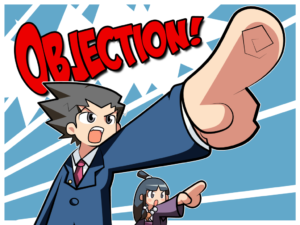 Your biggest enemy in selling — in person or in media — is doubt…
Your biggest enemy in selling — in person or in media — is doubt…
The moment your prospect stops believing you, you’ve lost the sale.
When I was a selling novice, I hated getting objections. As soon as anyone gave me a reason why they didn’t want to buy, I was out of there. It was a big part of the reason why I never really shined in my early days in telemarketing and in-person sales.
I’d get hit with resistance and I’d start backpedaling, to get out of there as quick as possible.
You hated the local newspaper’s coverage of a certain issue?
My chicken response was, “Okay, never mind.” When really, my response could’ve been, “Well, how often do you have to read it to make sure you still hate us?”
To which you may have said, “I read it every day!”
And then I could’ve said, “Well, let me help you get your hands on each day’s issues, so you can stay on top of all the reasons to hate us!”
I joke, but really, not really.
You’d be surprised why people buy certain things. In fact, why else would anybody buy just about ANY news today, if it weren’t to complain about it!
I digress…
How I learned to stop worrying about objections and love the results…
Later, after I’d run the marketing department of an IT training business for a few years, I got on the phone and started selling that training directly to customers.
(Sounds like a backwards career move, but it was a way I could get paid for performance in that gig — whereas marketing was salaried only and I’d maxed it out.)
One of the things about our training was that it was ugly. Like, scribbly handwriting on a white board ugly. Because that’s what it was.
Other training companies in the industry used nice PowerPoint presentations.
Occasionally, someone would call in wanting to buy our training, but complain that ours was ugly and others’ had polish.
“It is ugly,” I’d agree… (There’s nothing worse than telling someone their objection is wrong.)
And then I’d ask if they’d watched some of the sample training we offered. Usually, they had (that’s how they knew it was ugly). Then, I’d ask them if it felt like they were sitting down next to their smartest friend, as that friend explained how a certain tech worked, or how to use it. They’d agree that it did.
I asked if they liked learning that way. They did — that’s usually why they were calling.
I’d also go on to show them how our trainers were superior to the other companies’, for many reasons including the fact that many of them had actually helped write the exams they were doing the training for.
And then I’d ask what’s more important, the quality of learning they’d get, or the visual appeal of the presentation.
Unless this was an insurmountable objection that arose from a tech-illiterate executive in the company who would only buy the shiny training, this simple objection-countering was usually the last hurdle before they’d whip out their credit card and buy.
This happened so frequently that I came to realize that…
Objections mean your prospects are paying attention and are engaged in your message…
Which is a critical observation, especially in marketing.
Because in marketing, the job of every element of your campaign is to move them forward through the selling process.
It’s a war against attention attrition.
The moment they stop being engaged and thinking about it, you’ve lost them.
But as long as they’re engaged — even if it’s because they have an objection or a question that has to be answered — you’ve still got them.
And if you’ve still got them, you can still make the sale.
So in marketing, objections are your friend.
As you’re putting together your marketing messages, don’t hide them and don’t ignore them. Embrace them.
Every time you get to a point in your marketing where you wonder if your prospect would believe what you’re telling them, go deeper.
Make each claim or promise believable. Back it up. Exude credibility. Pile on the proof.
Wanna get even better at this?
Picture your prospect as a salty sailor…
Imagine for a minute that your prospect is a grumpy old lump who doesn’t want to believe anything.
And in response to every line of your selling message, they’re yelling out, “So what?!” and “Bullshit!”
And your job is to prove them wrong. Your job is counter those objections.
When they say “So what?!” tell them why you’re saying what you’re saying, and what it means to them.
When they yell “Bullshit!” you have to prove to them beyond a shadow of a doubt that what you’re saying is truthful and verifiable.
Assuming you caught their attention with compelling claims and promises, and assuming you can satisfy this salty sailor with enough believability to outweigh their objections, you’ll find that your marketing will get results.
Want to get really good at answering objections?
I’ve actually collected 26 types of proof and credibility that you can use in selling. These are helpful if you’re a marketer or copywriter. They also help if you sell one-on-one. And if you’re a business owner, they’re even more valuable, because you can build entire offers around proof and you’ll find that they’re incredibly easy to sell.
You can learn about these 26 sales boosters in my Proof, Credibility, and Believability training. Get instant streaming access when you join BTMSinsiders today.
Yours for bigger breakthroughs,
Roy Furr



